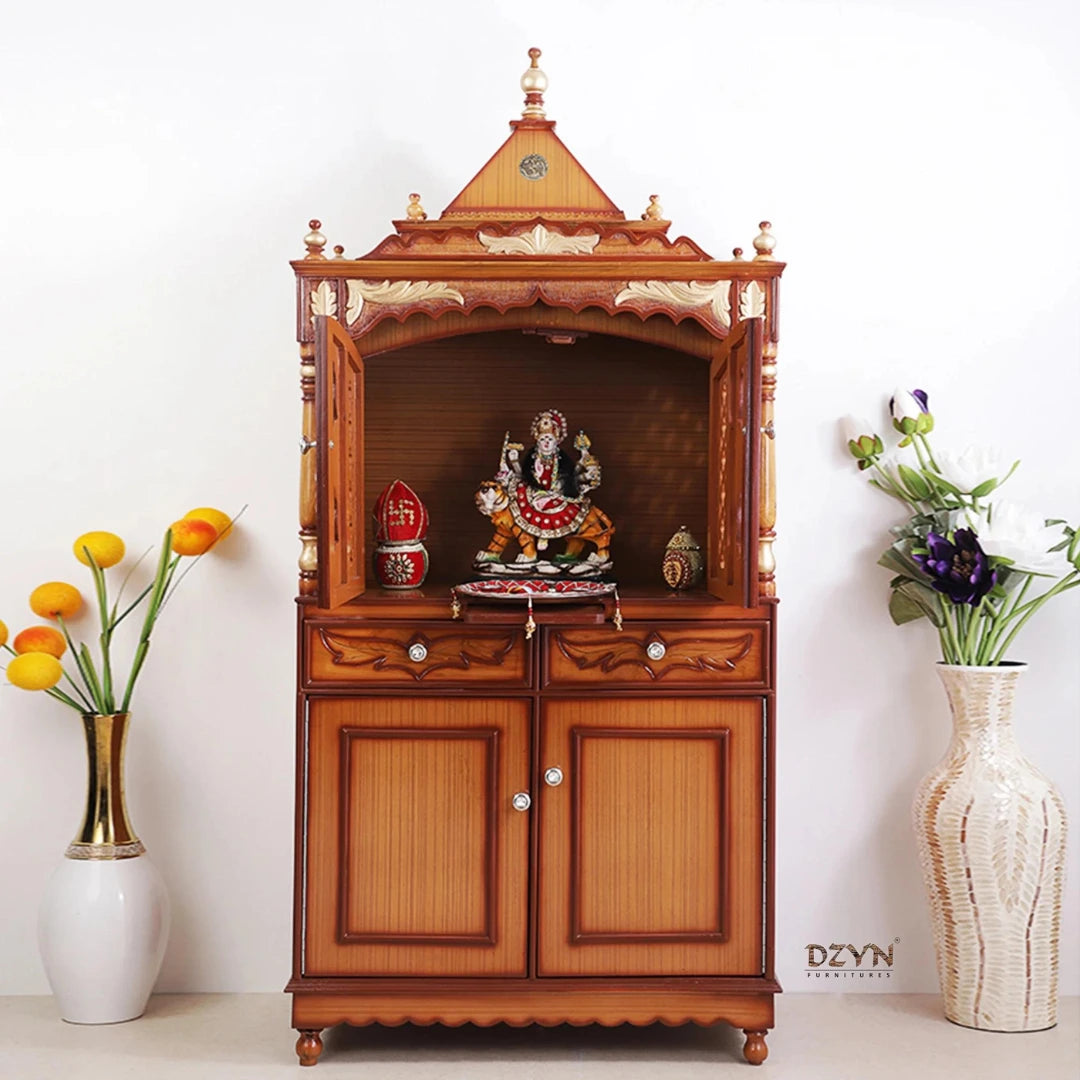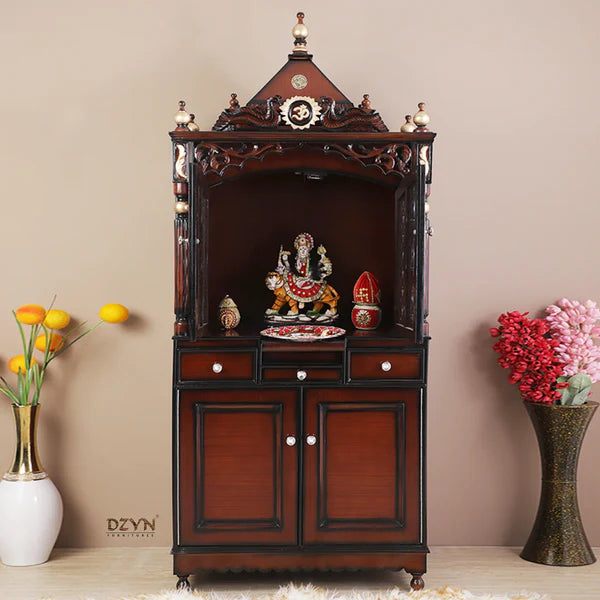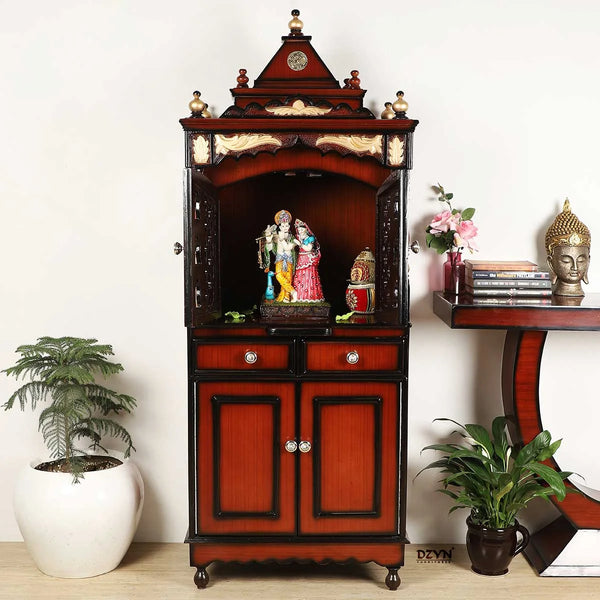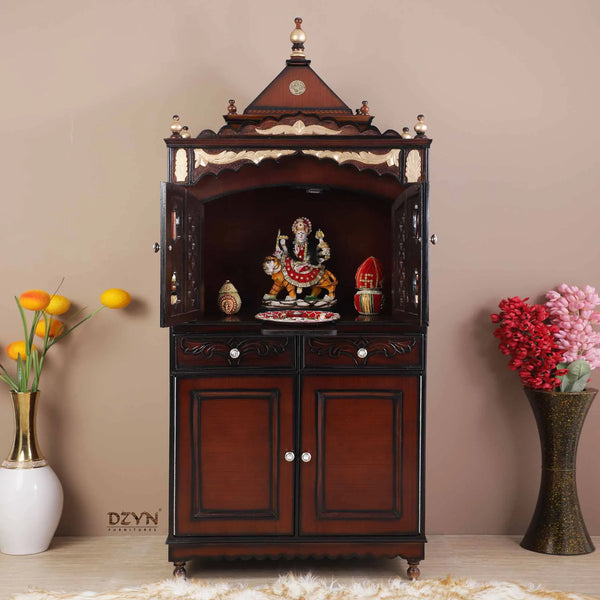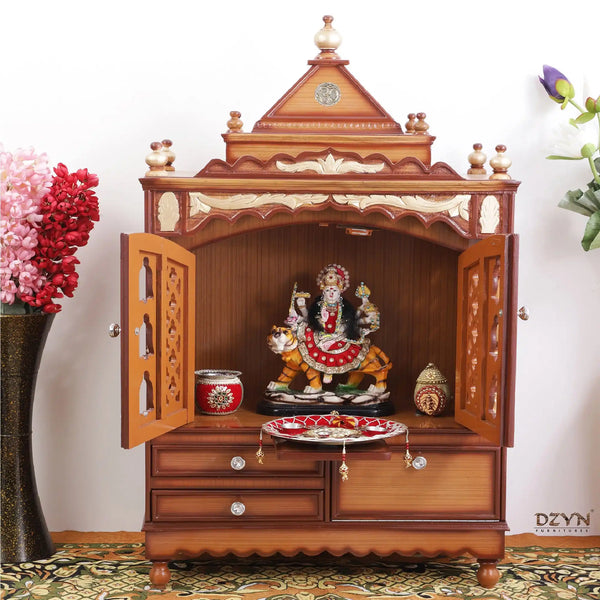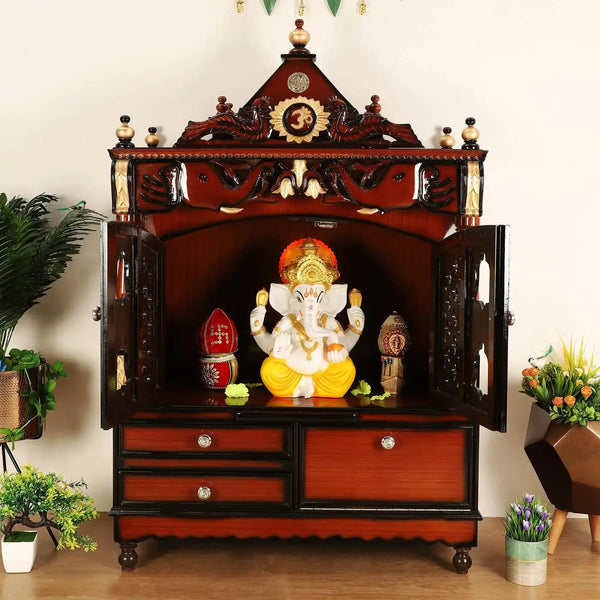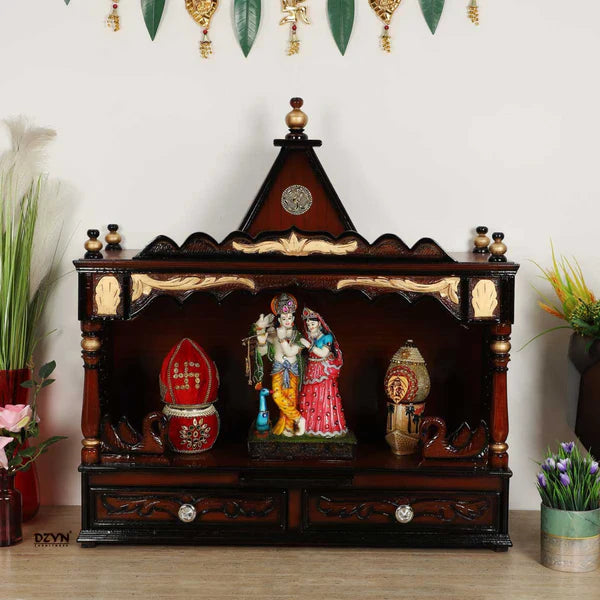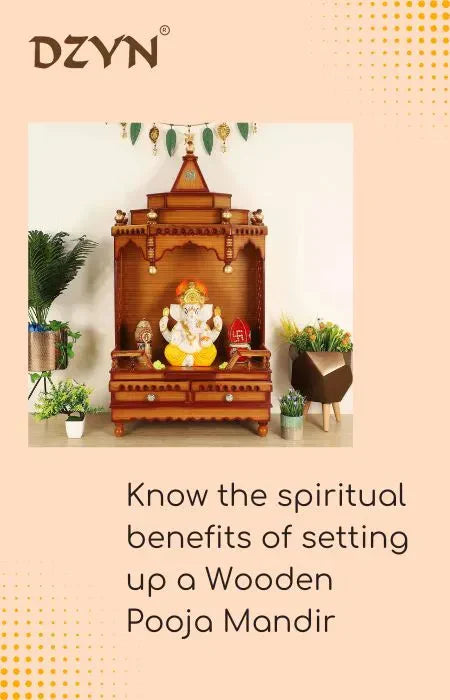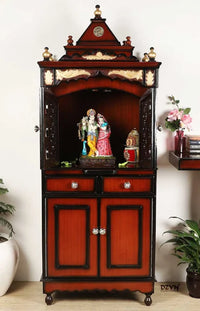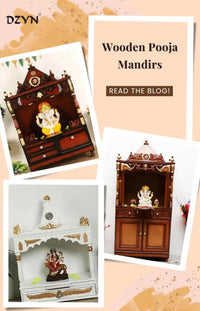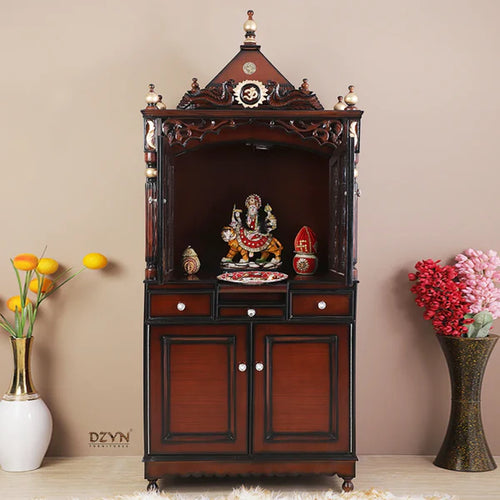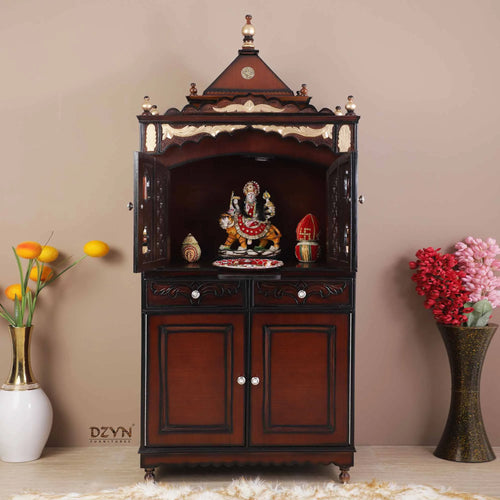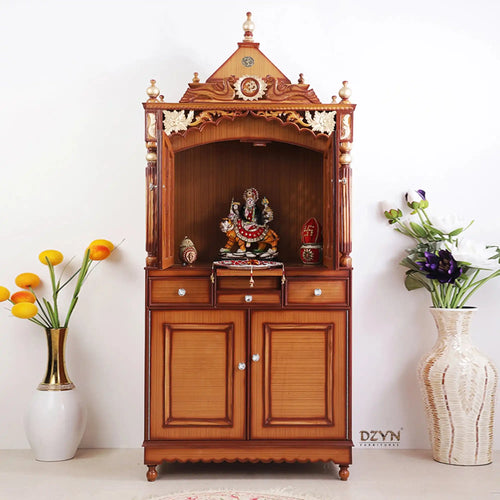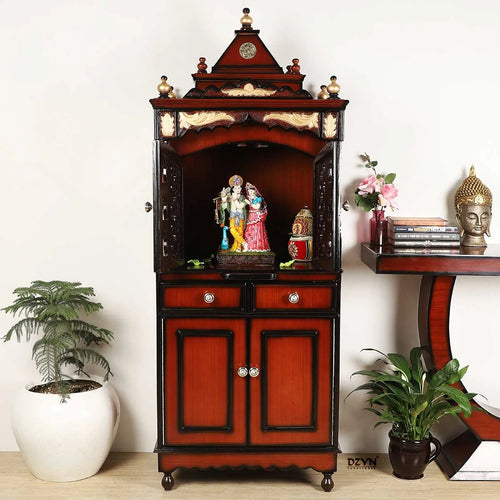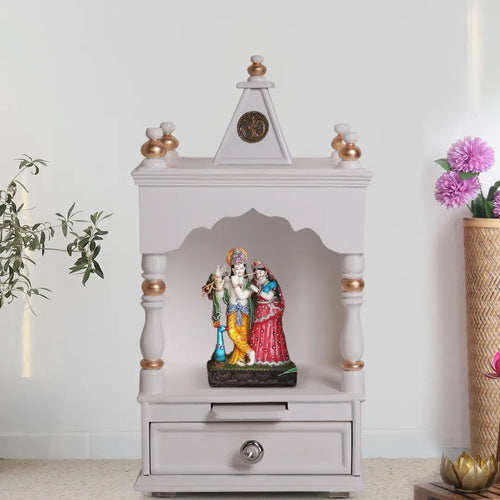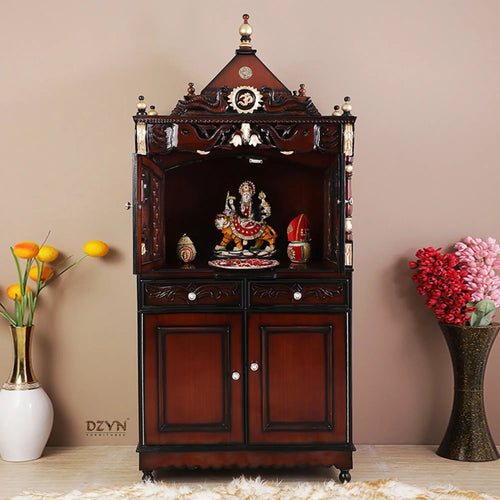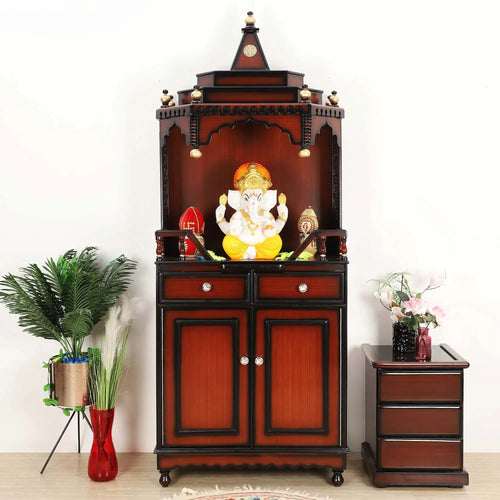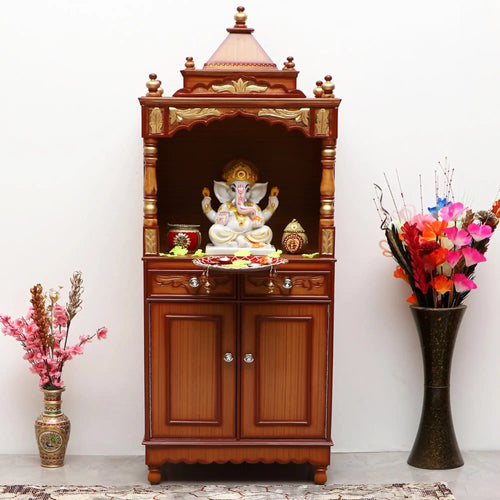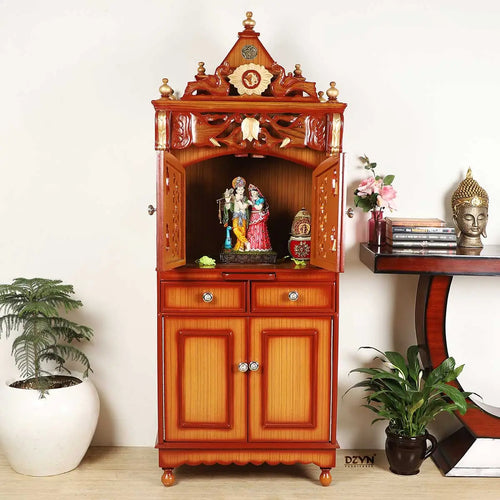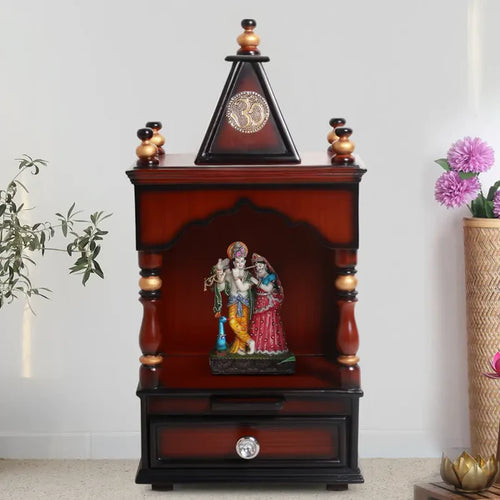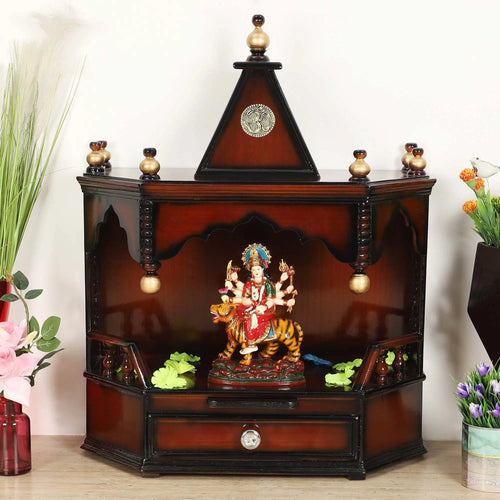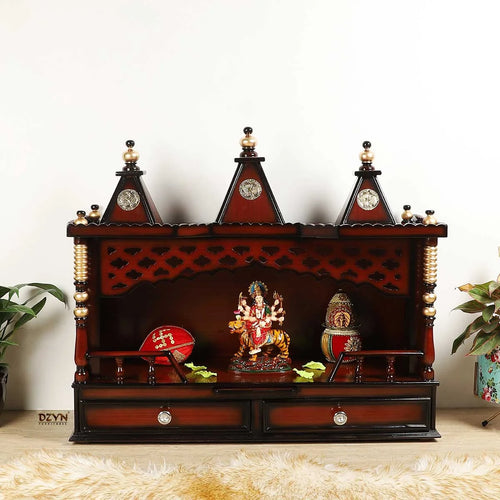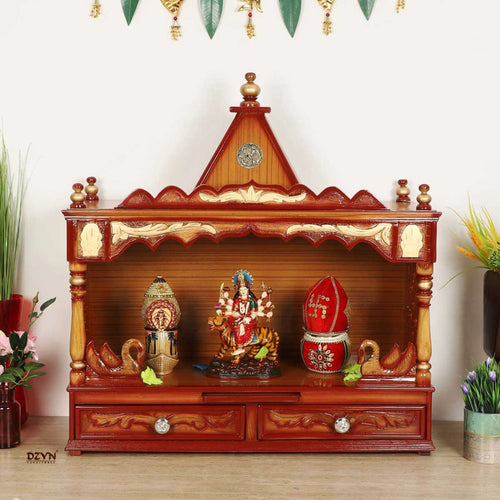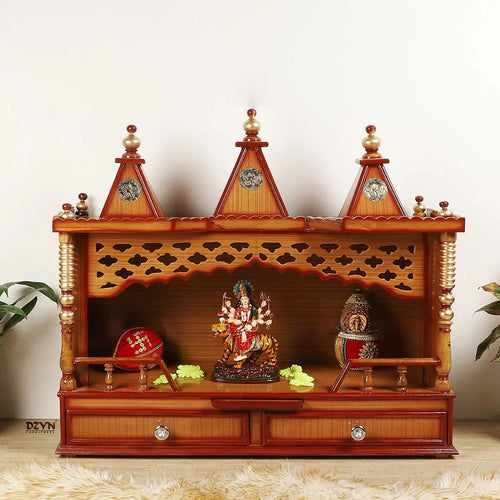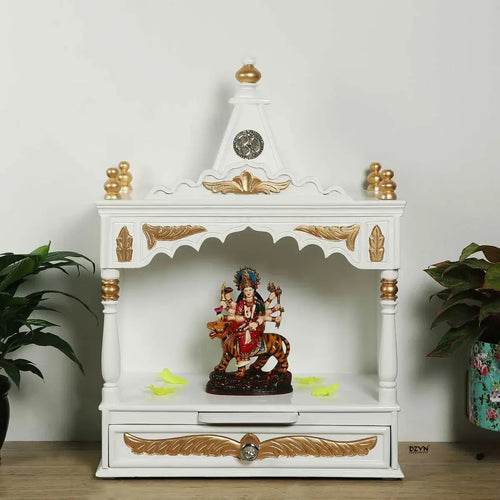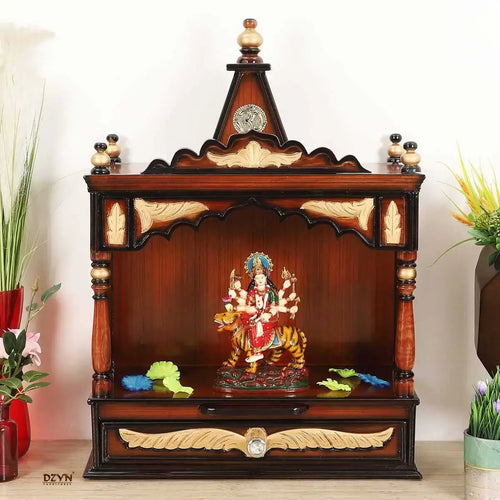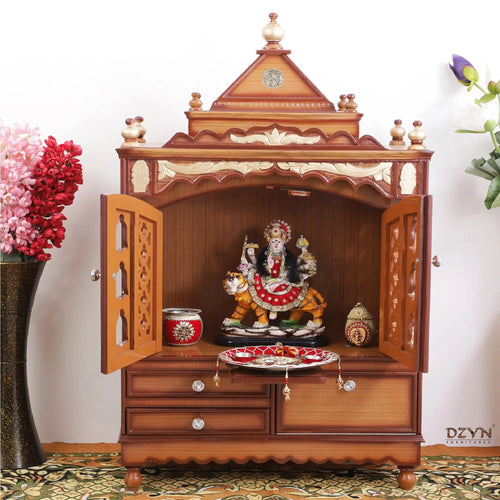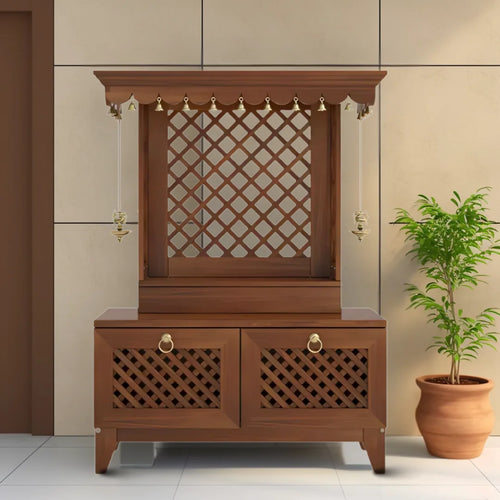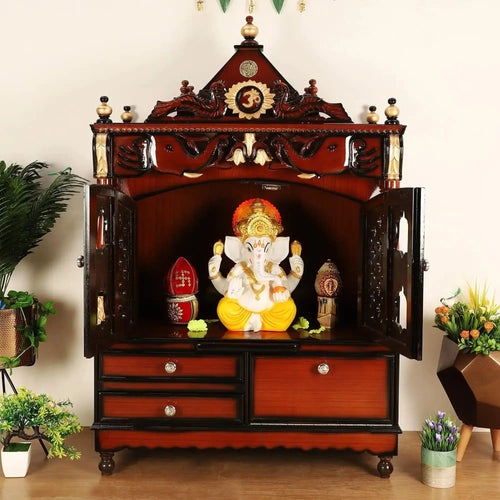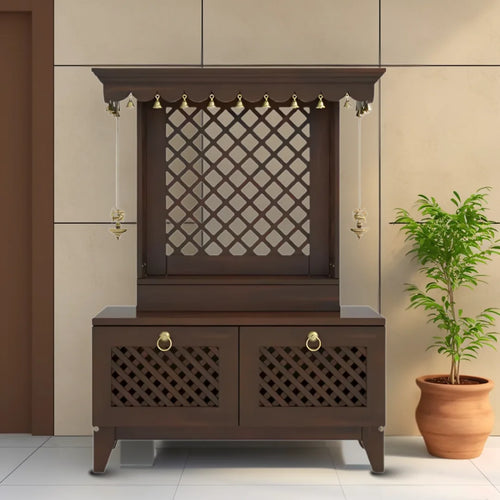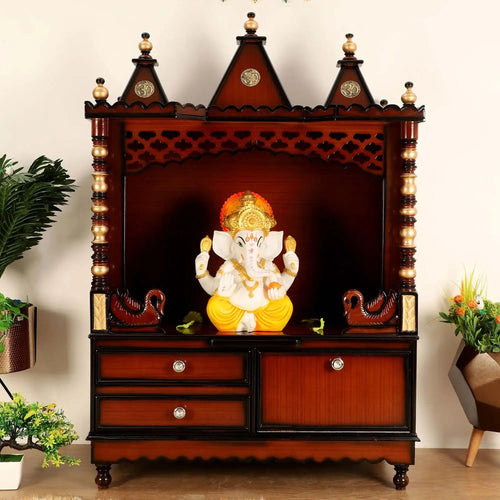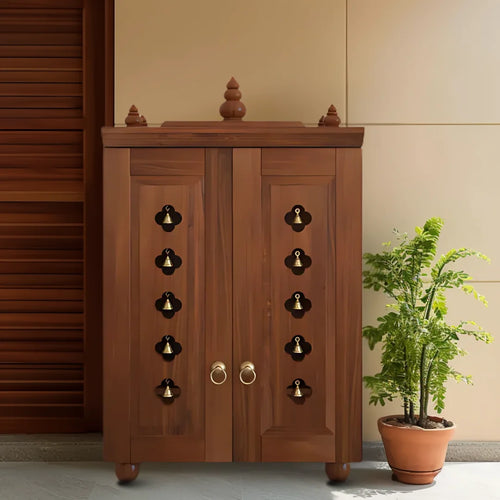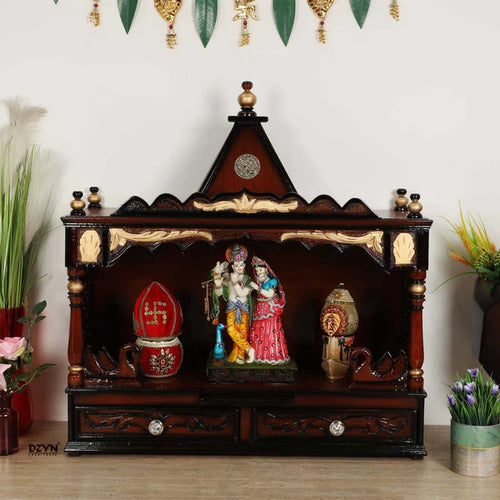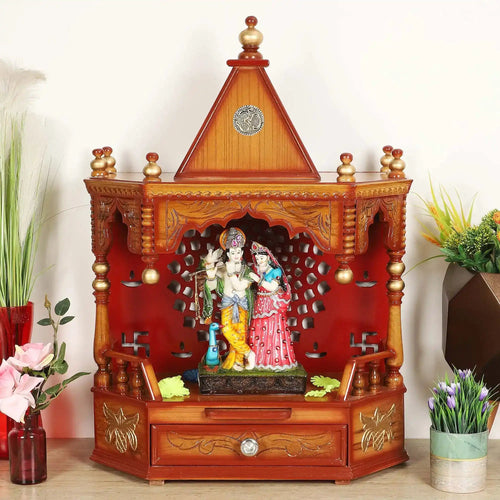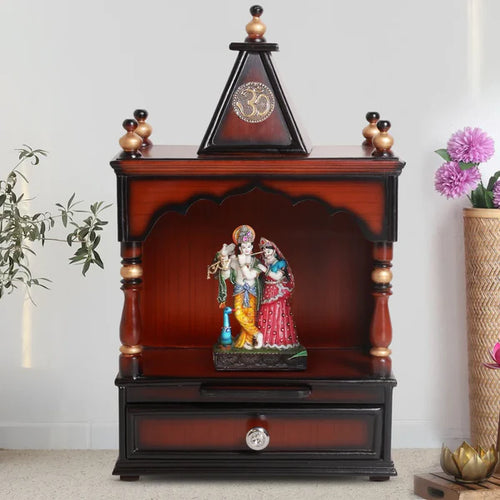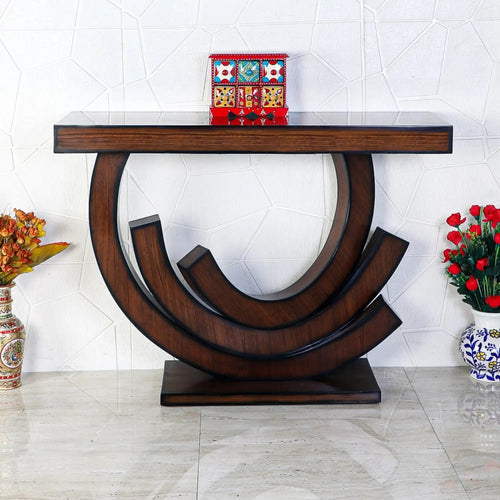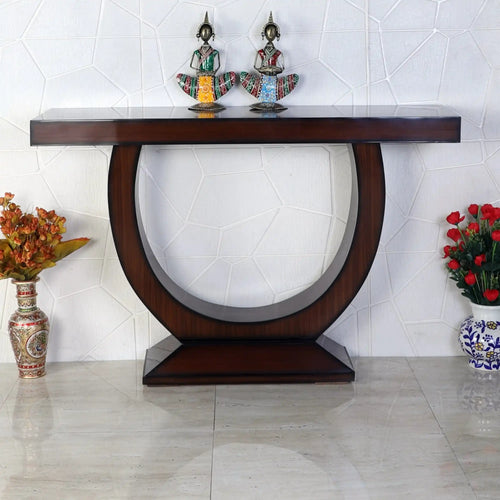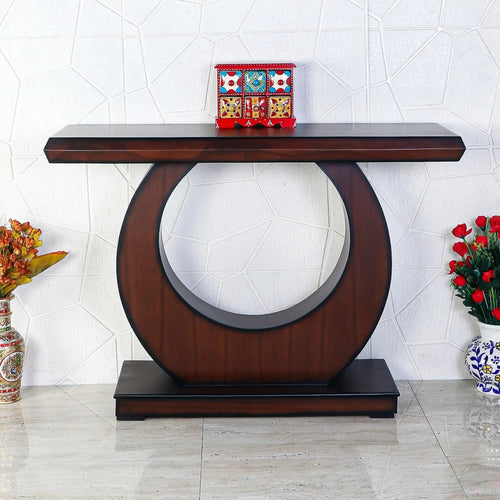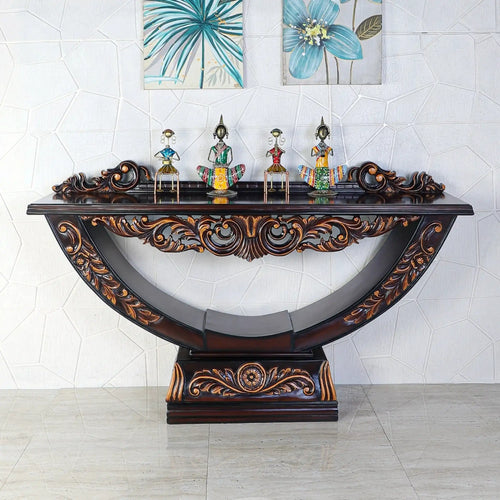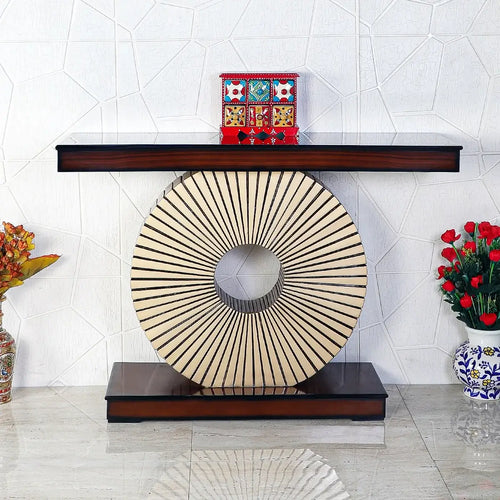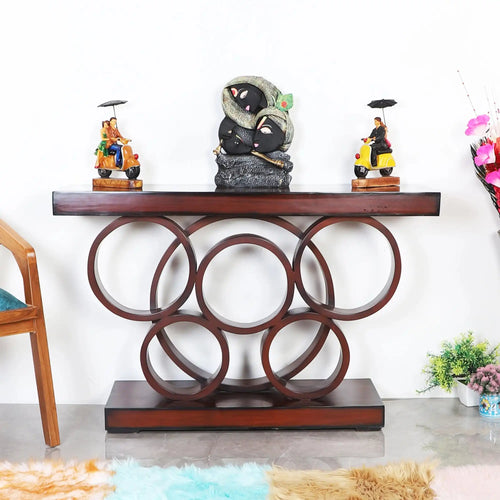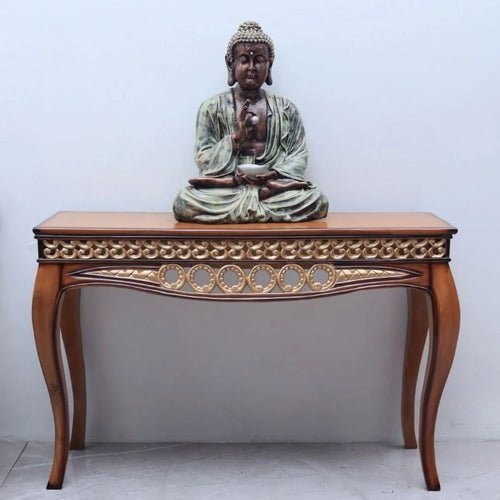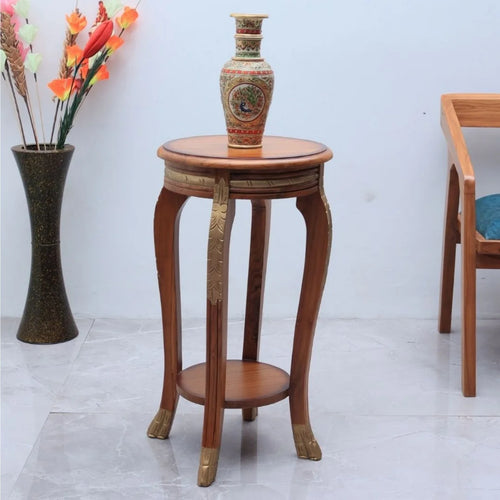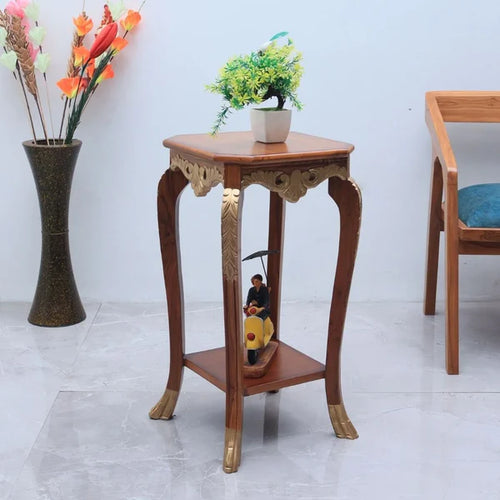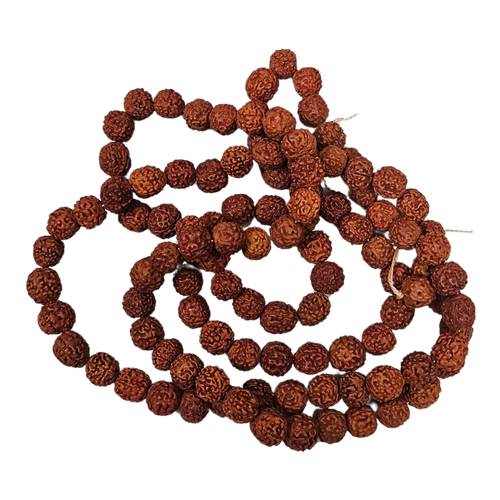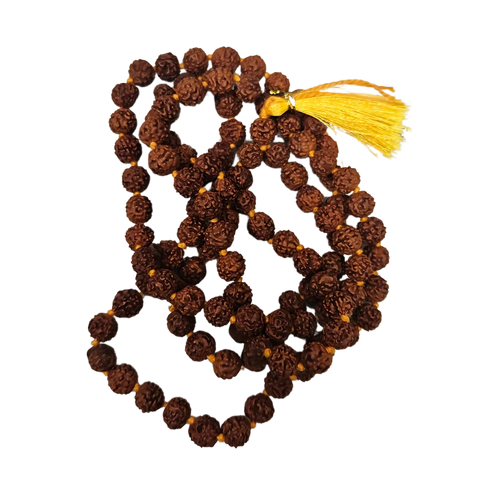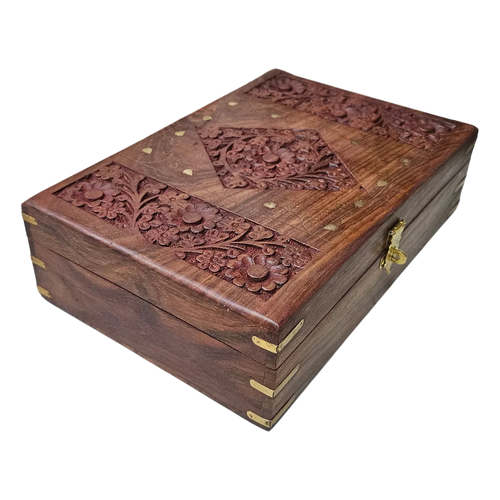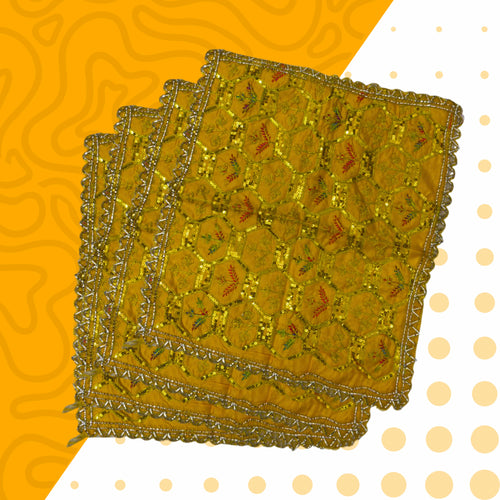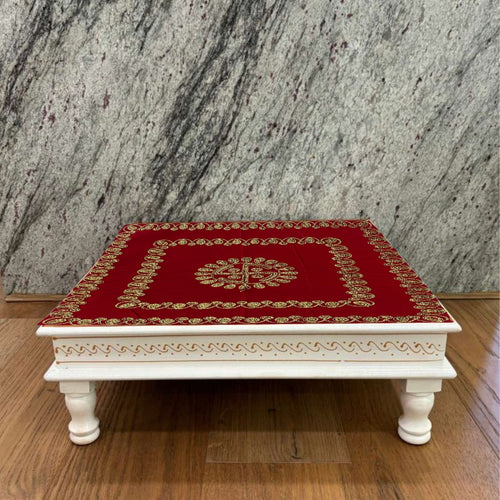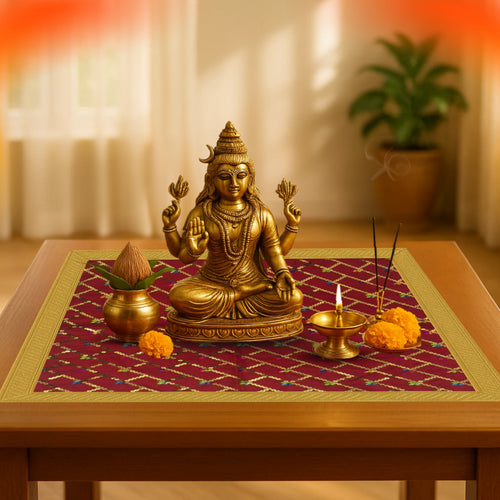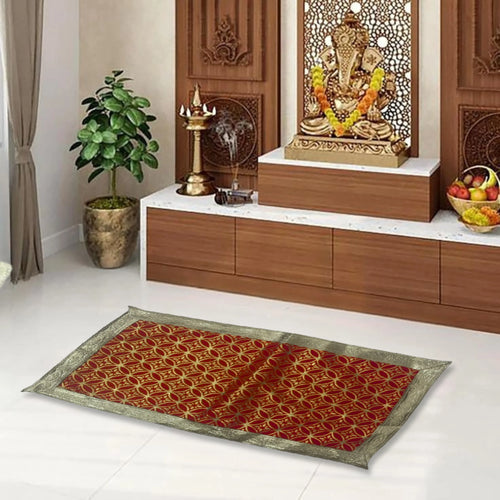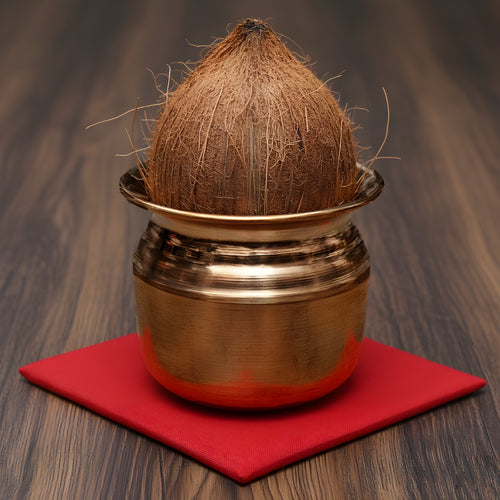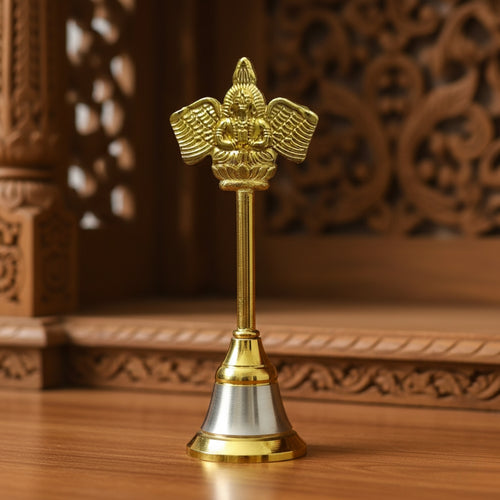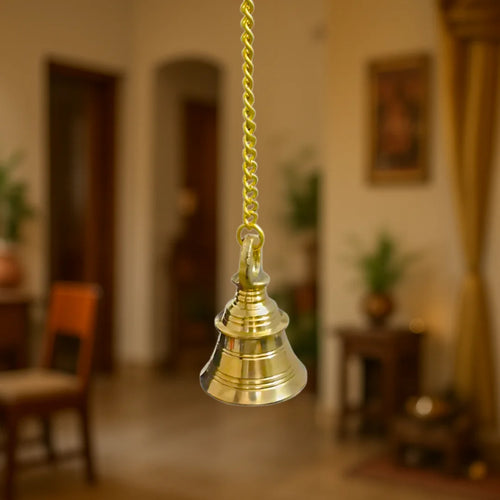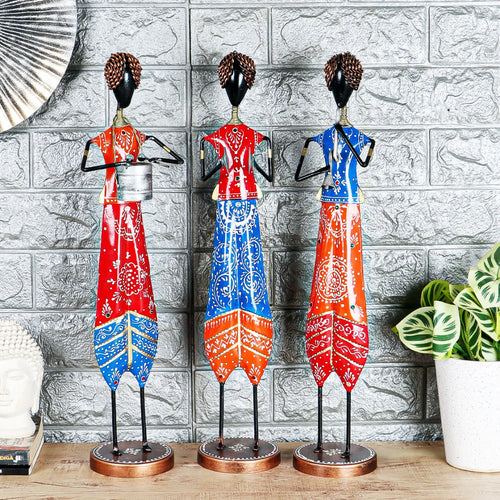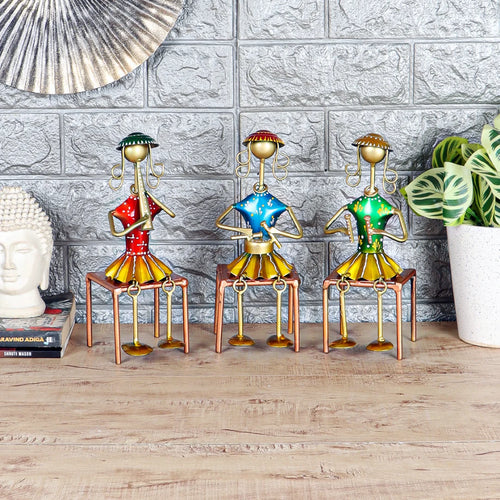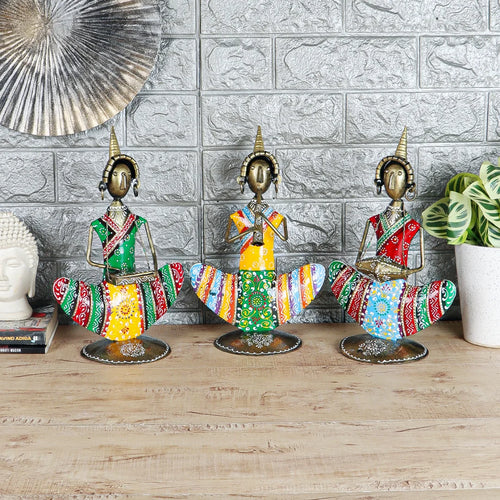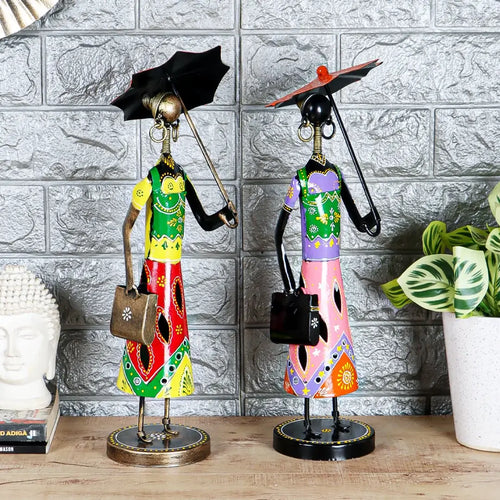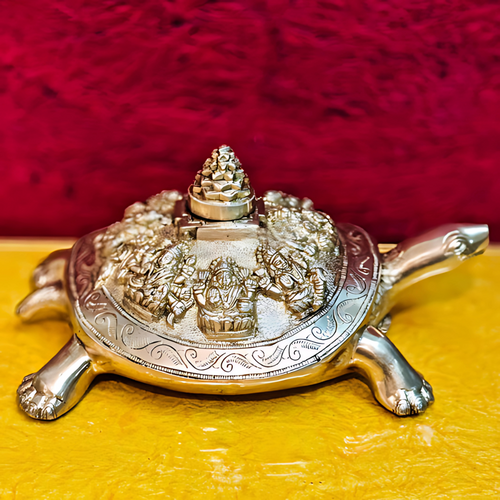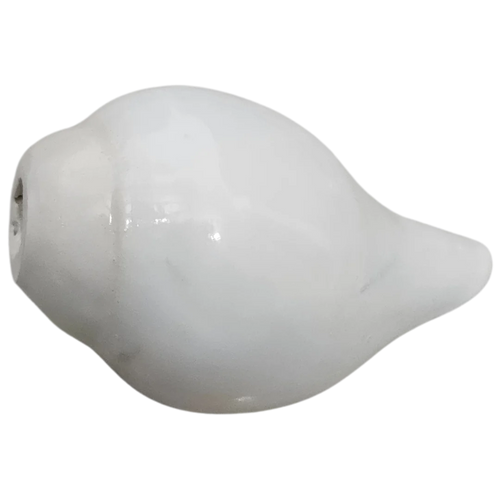The Makar Sankranti festival signifies the start of longer days. This time is celebrated for the plentiful harvest, community bonding and spiritual gratitude. Temple decorations became the heart of the celebrations because they represent spirituality and devotion. Thoughtful mandir decoration enhances the festive spirit. People celebrate the festival with vibrant rangoli designs and floral adornments of eco-friendly elements and theme-based setups. Decorating the mandir can be a way to show respect and creativity.
<Mandir Decor Ideas for Makar Sankranti
Makar Sankranti decoration for your mandir is a way of showing your gratitude and devotion to the god. These ideas can inspire you to create a mandir decor that reflects with the festive spirit. We should remember that the essence of Makar Sankranti lies in simplicity, purity and the celebration of light. Add these ideas to the decorations that show the values of the festival. Explore these inspiring ideas to elevate your mandir's charm this Makar Sankranti.
1. Themed Decoration: The theme of any decoration sets the whole thing in harmony and makes the environment beautiful. There are several ideas for Makar Sankranti that could include harvest, kites and solar themes. You can decorate the temple with themes that represent these ideas.
- Harvest theme: You can use fresh grains, miniature sugarcane sticks, and earthen pots that carry sesame seeds and jaggery in the mandir. Fresh stalks of crops are also a very beautiful option.
- Kite theme: You can use colorful paper kites and strings around the mandir that symbolize the joy of kite flying. It is a significant tradition of Makar Sankranti.
- Sun theme: You can add sunburst patterns with yellow and gold accents as the festival celebrates the sun's transition.
2. Traditional Rangoli Patterns: Add rangoli designs to increase the festive ambiance of a mandir during any festival. Use rice flour, colored powders or flower petals to create beautiful designs and patterns around the mandir. Choose designs with the sun, kites or harvest themes. You can also add auspicious symbols such as swastikas, lotuses or footprints of the Goddess. To set the divine glow on the rangoli, you can place a diya at the centre or around the rangoli.
3. Flower Decorations: Flowers have always been a traditional and integral part of mandir decoration. They symbolize the purity and devotion of people.
- Garlands and strings: Marigolds, jasmine or roses can be used to make beautiful garlands. These flower garlands can be wrapped around pillars or hung around idols.
- Floral backdrops: A floral backdrop could be created by using banana leaves, lotus flowers and marigold strings. This adds a lively spirit to the festival season.
- Floral rangoli: Fresh flower petals could be used to create rangoli designs on the floor or table.
4. Lighting and Lamps: Lighting the surroundings is an integral part of adding beauty to a mandir. We Add rows of brass or clay diyas surrounding the mandir for an ethnic feel. It is said that sesame oil is used for lighting because it holds importance in the festival of Makar Sankranti. Some temples are decorated with warm strings of fairy lights to make a modern, festive look on the mandir. People also use aromatic candles or designer lanterns to get elegance in decoration.
5. Natural Material: These are some of the eco-friendly and earthy materials that show natural looks in your mandir decor.
- Banana leaves: You can place banana leaves around the mandir base or on the walls for a more earthy look.
- Coconut shells: Placing coconut shells to hold flowers or as diyas can be a very good option.
- Earthen pots: Using small earthen pots with water or flowers will add an earthy charm
6. Kite and Paper Craft: Kites are the symbol of freedom and celebration in Makar Sankranti. Hang small kites from the ceiling or around the mandir. You can also create a kite-shaped backdrop using colored paper or fabric. Add strings of kite-shaped cutouts and make a garland with marigold flowers.
7. Decorative Torans: Torans are the door hangings that add a festive environment to the temple. They are considered lucky for the home as they bring prosperity. Use marigold or mango leaves for creating traditional torans at the entrance of the mandir. Use fabric torans that include Makar Sankranti themes like a sun or a kite. Make your own torans with items like paper kites or torn cloth pieces.
8. Idol Decoration: The god present in the temple should be dressed in bright yellow or orange clothes. The yellow represents the energy of the sun. The god should be adorned with flower garlands that add freshness and fragrance. We can also use miniature kites, grains or sugarcane as props for the idols.
9. Personalized Decorative Items: Also, it is possible to make your own home mandir decorator for the Makar Sankranti festival which shows your family traditions and customs. The ancient artifacts, including brass oil lamps and silverware or ornament pieces, can be used to commemorate your family traditions. You can also write personal prayers and well-wishes in notes and cards. Pair photos or some symbol with your own family background.
10. Sustainable Decoration Ideas: Instead of plastic ornaments, use natural materials such as jute, bamboo or paper. The objects such as old clothes or ornaments can be used as raw materials to creatively develop the decoration. Household stuff, such as mason jars or glass bottles, can be repurposed for presenting flowers or candles. Always maintain cleanliness and arrange the decorations. At the end finish the decoration with soft devotional songs in the background.
Havan and Yagna on Makar Sankranti
Havan and Yagna are fire rituals that have their roots in the Vedic tradition. They are the nexus between the terrestrial and celestial planes. The word "havan" indicates making offerings to a sacred fire and "Yagna" indicates a more general range of sacrificial rituals performed for a variety of aims, including economic success, good health, and spiritual advancement. Both rituals are characterized by calling on divine energies, chanting mantras, and introducing ghee, grains and herbs onto the flame. Fire is seen as a purifier and a messenger between the human and the Divine. It is said that the havan or Yagna offerings are carried to the deities, which in turn give us prosperity and good health.

Importance of Havan
Makar Sankranti is a very spiritually important festival. It symbolizes the onset of the sun's journey towards the north, which is the most auspicious period in Hinduism. It is thought that in this time of the year, the god Sun gives all of its blessings to the Earth. Makar Sankranti is regarded as a day of energy, intelligence and divinity. This auspicious atmosphere is created harmoniously with doing havan and Yagna on Makar Sankranti. It washes away all the evil in the world, calls the blessings of gods and goddesses and promotes spiritual ascent. Havan on Makar Sankranti is a representation of the extinction of ignorance and the rise of wisdom.
Components of Havan and Yagna
The havan and Yagna rituals are complex and include various elements.
1. The Sacred Fire: It is at the center of the ritual. The fire is a symbol of divine energy and acts as a medium for conveying offerings to the gods. It also symbolizes transformation by burning impurities and going the way for renewal.
2. Mantras: There is a chanting of Vedic mantras in the rituals. Such mantras are holy hymns with vibrational powers that may balance the atmosphere as well as heighten the spiritual consciousness of the participants.
3. Offerings: The offered materials include ghee, grains, dried herbs and sandalwood to the fire. Each offering holds its own significance. It might be for health, wealth and harmony, etc.
4. Priests and Participants: The ritual is mainly performed by priests who are well-versed in the Vedic scripture, while family members and participants of the community make the event holy.
Regional Variations in Havan and Yagna Practices
The Makar Sankranti festival celebration takes various shapes and forms in different regions in India. therefore, havan in Makar Sankranti and Yagna practices also vary:
- North India: Havan are performed in homes in Uttar Pradesh and Haryana by families and people seek prosperity and good health. The rituals are followed by joint feasts and kite flying which make the festival a celebration of happiness and unity.

- South India: The same event is celebrated as Pongal in the southern part of India. Yagnas are performed in temples and houses with offerings of freshly reaped grains. The rituals are an offering to nature for its good harvests.
- Eastern India: The Makar Sankranti festival is celebrated as the Ganga Sagar Mela in West Bengal. Thousands of devotees take a holy dip in the river Ganges and conduct havan there to purify their souls.
- Western India: In Gujarat and Rajasthan, the havan is conducted in temples and community halls followed by kite-flying competitions that denote the journey of the Sun.
According to the holy scriptures, the havan and Yagna rituals have spiritual benefits:
1. Purification of the Mind and Soul: The rituals purify the mind and soul of a person and create a sense of peace and harmony. They are an opportunity to reconnect with the divine and seek guidance for the year ahead.
2. Community Bonding: The rituals are usually group activities that make the families and communities unite in a bond of unity and common purpose.
Challenges and Criticisms
The havan and Yagna are sacred practices that have faced challenges and criticisms:
1. Environmental concerns: The large-scale burning of materials causes air pollution, which has raised environmental concerns over the practices in crowded cities.
2. Accessibility: These rituals are often performed by priests. Nowadays this can be expensive and inaccessible for low-income families which raises questions about the inclusivity of these traditions.
3. Modern Relevance: In an increasingly secular and fast-paced world, some raise questions about the relevance of these rituals which seem outdated or even superstitious.
4. Modern Adaptations: Many communities have been adopting eco-friendly practices such as alternative materials for offering and performing on a smaller scale to address all these challenges. The educational initiative should publicize the spiritual and cultural value of small havan and Yagna to the modern audience.
Types of Prasad for Makar Sankranti Festival
The prasad cooked during Makar Sankranti has significant importance. It represents nature's abundance and the spiritual essence of the festival. Each region of India has a special Makar Sankranti food. People use some traditional ingredients such as sesame seeds, jaggery, rice and fresh produce.
Types of Prasad
1. Til ke Ladoo: Sesame and jaggery are warming ingredients and these laddoos would be the perfect offering during the winter festival. This is a very simple sweet that can be easily prepared at home.

Ingredients:
Til/Sesame seeds: 1 cup
Gur/Jaggery: 1 cup
Ghee: 1 tablespoon
Water: ¼ cup
- Dry roast the sesame seeds until they turn golden and become aromatic, then set them aside to cool.
- Add the ghee to a pan on low heat and add gur and water. Cook until the mixture forms a ball of water.
- Mix the roasted sesame seeds with melted jaggery and make laddoos while the mixture is still warm before it hardens.
2. Til gur gajak: A common North Indian prasad that is light and crunchy.
Ingredients:
Til: 1 cup
Gur: 1 cup
Ghee: 2 tablespoons
- Like the Laddos, dry roast sesame seeds until golden and aromatic and let the seeds aside to cool down.
- Melt the jaggery with ghee till it forms a syrup.
- Mix roasted sesame seeds into the syrup and spread the mixture on a greased plate.
- Flatten the mixture with a rolling pin and cut into squares while warm.
3. Pongal: This sweet rice dish is known as Sakkarai Pongal in Tamil Nadu and this dish represents gratitude for a bountiful harvest.

Ingredients:
Rice: 1 cup
Moong dal: 2 tablespoons
Jaggery: ¾ cup
Ghee: 2 tablespoons
Cashews and raisins: according to your taste
Cardamom powder: ½ tablespoon
- Boil rice and moong dal together until they turn mushy.
- Melt the jaggery in a little water, strain it with a strainer and keep the jaggery water.
- Mix this jaggery with cooked rice and dal and cook the mixture for 2 minutes.
- Roast the cashews and raisins in ghee.
- Add ghee, cardamom powder, cashews and raisins to the cooking pongal. These items give off an aromatic fragrance.
4. Makara Chaula: A traditional food in Odisha that is prepared using fresh harvest ingredients to seek blessings of the Sun God.
Ingredients:
Rice- 1 cup soaked.
Banana- 1, cut into small pieces
Sugarcane pieces- ½ cup
Jaggery- ½ cup
Grated coconut: ½ cup
Milk: 1 cup
- Cook the soaked rice and mix all the ingredients in a large bowl.
- This simple dish is ready and it is served fresh as an offering to the deity.
5. Khichdi: In many regions, particularly Bihar and Uttar Pradesh, khichdi is a sacred prasad, is used to serve the god as a Sankranti special food.

Ingredients:
Rice: 1 cup
Moong dal: ½ cup
Ghee: 3 tablespoons
Cumin seeds: 1 tablespoon
Asafoetida: 1 pinch
Green chillies and ginger: 1 tsp
Salt and turmeric: according to your taste
Seasonal vegetables (peas, cauliflower, spinach) - 1 bowl
- Wash and soak rice and dal and roughly cut all the vegetables. Finely chopped green chillies and ginger.
- Heat ghee in a pressure cooker. Add cumin, asafoetida, chillies and ginger.
- Add all the vegetables and saute for 2 to 3 minutes.
- In the same mixture, add soaked rice and dal. Season the mixture with turmeric and salt.
- Add water in the pressure cooker and cook with water till soft and mushy or to one whistle.
6. Puran Poli: This sweet flatbread is a Maharashtrian delicacy prepared at home as an offer to the deities to symbolize prosperity and happiness.
Ingredients:
Wheat flour: 1 cup
Chana dal: ½ cup
Jaggery: ½ cup
Cardamom powder: ½ tablespoon
Ghee: 2 tablespoons
- Soak the chana dal and cook it until soft and mushy. Then, mash the dal.
- Cook the mashing dal in jaggery and cardamom powder and thicken it till it becomes like a dough.
- Knead wheat flour into a very soft dough and make little balls.
- Fill the dough ball with the dal mix and roll it into a flatbread. Heat the tava and cook puran poli with ghee on low-medium heat.
7. Ellu Bella: Ellu Bella is a mix of sesame, jaggery dried coconut, and peanuts dish that is cooked in Karnataka.

Ingredients:
Sesame seeds: ½ cup
Chopped Jaggery: ½ cup
Desiccated dried coconut: ½ cup
Roasted peanuts: ½ cup
- Always dry roast sesame seeds and let cool for any sesame-related dish.
- Mix the roasted sesame seeds with jaggery, coconut and peanuts.
- This easy dish is now ready to distribute as prasad to friends and family.
8. Gur ki roti: It is a traditional Punjabi dish that symbolizes the agricultural origin of the festival.
Ingredients:
Wheat flour: 1 cup
Jaggery: ½ cup
Ghee: For frying
- Dissolve the gur in water and mix flour with jaggery water to make a soft dough.
- Roll into flatbreads and cook the roti on a tawa with ghee.
Importance of Prasad During Makar Sankranti
Prasad is known as a very important part of our Hindu traditions. Various foods that warm the body and are full of nutrients are prepared during the Makar Sankranti festival. It is a form of offering to honor the harvest season as well as the Sun God, Surya. The ingredients are mainly sesame seeds and jaggery for purification, good health and prosperity.
h2 id="cultural-nutritional">Cultural and Nutritional RelevanceEach prasad dish prepared as makar sankranti food is a symbol of the core themes of the festival. These prasads express gratitude and freshness. Sesame seeds, jaggery, and rice offer energy-rich foods that help keep people warm and nourished during the winter months. These items also come from the local area and this tradition helps the local farmers to grow during the Makar Sankranti festival.
